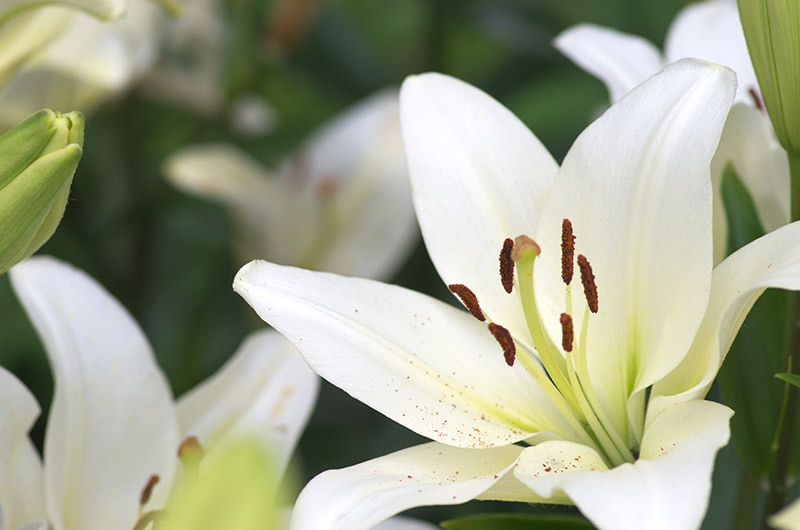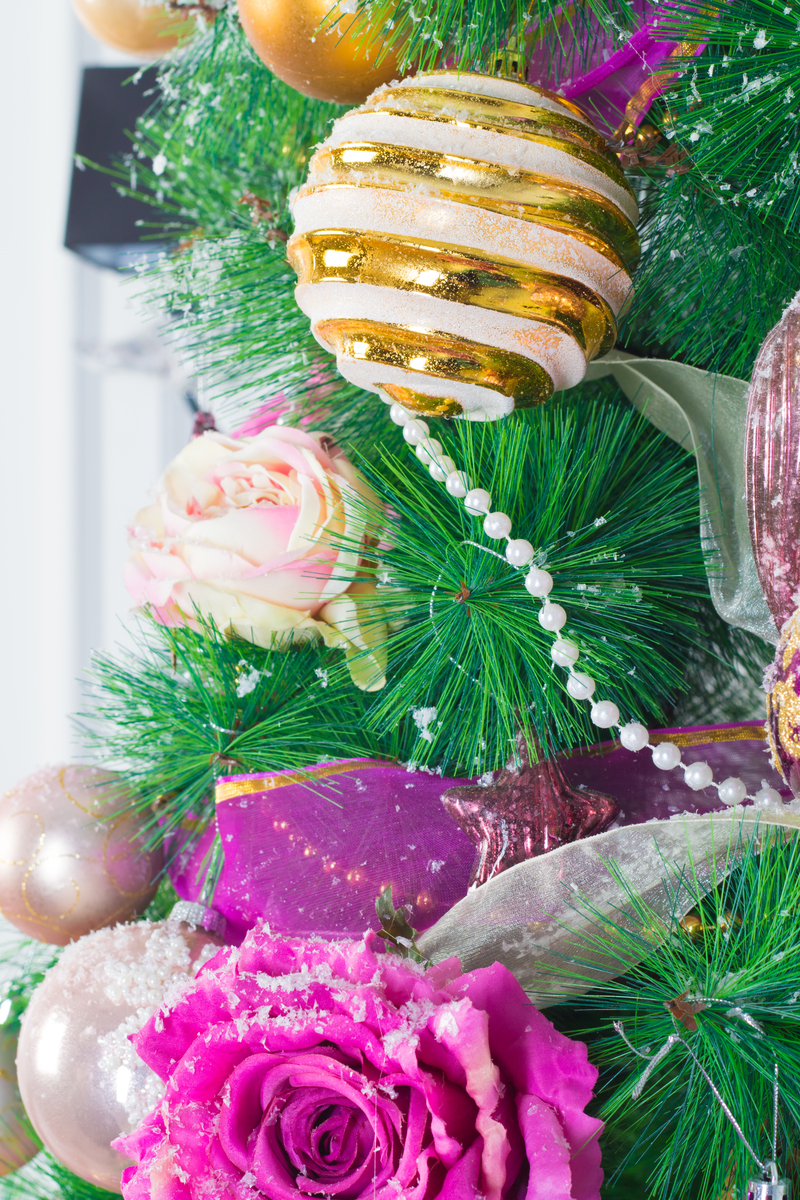Achieve the Perfect Hydrangea with These Care Tips
Posted on 21/08/2025
Achieve the Perfect Hydrangea with These Care Tips
Hydrangeas are cherished for their big, vibrant blossoms and lush foliage. From gardens to interior arrangements, these captivating plants are universally adored. To truly achieve the perfect hydrangea, understanding their unique care requirements is essential. Whether you're a beginner or an experienced gardener, following the right hydrangea care techniques will ensure flourishing blooms season after season. In this comprehensive guide, we'll cover everything you need to grow healthy, thriving hydrangea bushes in your garden.
Understanding Hydrangea Varieties
Before diving into essential hydrangea care tips, it's important to know that there are several types of hydrangeas. Each variety has distinct characteristics and care preferences. The most commonly grown in gardens include:
- Hydrangea macrophylla (Bigleaf Hydrangea):
This is the classic hydrangea with large mophead or lacecap flowers. Bigleaf hydrangeas are famous for their color-changing blooms that vary with soil pH.
- Hydrangea paniculata (Panicle Hydrangea):
Known for their cone-shaped flower clusters, panicle hydrangeas bloom later in summer and are more tolerant of sun and cold.
- Hydrangea arborescens (Smooth Hydrangea):
This North American native is prized for its round, snowball-like flowers, such as the popular cultivar 'Annabelle'.
- Hydrangea quercifolia (Oakleaf Hydrangea):
With leaves resembling oak leaves, this type provides beautiful fall color and elongated flower clusters.
Choosing the Right Hydrangea for Your Garden
When selecting a hydrangea variety, consider your climate, soil type, and garden size. For example, Bigleaf hydrangeas thrive in milder climates, while panicle hydrangeas are better suited for colder areas. Matching the plant to your location is the first step toward achieving perfect hydrangea blooms.

Optimal Location: Where to Plant Hydrangeas
Hydrangea placement plays a significant role in their health and vigor. To truly achieve the best hydrangea growth, choose a spot with:
- Morning sun and afternoon shade, especially in warmer climates. Full sun can damage leaves and flowers, while complete shade may reduce flowering.
- Well-draining, moist, and rich soil. Hydrangeas dislike dry or waterlogged soil.
- Protection from strong winds, which can damage large flower heads.
Remember, while panicle hydrangeas tolerate more sun, all hydrangea varieties benefit from some afternoon protection.
Soil Preparation: The Key to Healthy Hydrangeas
Proper soil preparation is crucial for vibrant hydrangea growth. Here are a few tips to create an ideal environment for your hydrangea bushes:
- Soil pH: Bigleaf hydrangeas are renowned for their ability to change flower color depending on the soil's acidity. Acidic soils (pH below 6) will produce blue blooms, while alkaline soils (pH above 7) will create pink flowers. Panicle and oakleaf hydrangeas generally have white or cream blooms that don't change color.
- Amend the soil with organic matter such as compost or rotted manure for improved structure and moisture retention.
- Drainage: Ensure the planting area does not collect standing water. Mixing in sand or perlite can help improve drainage if needed.
Test your garden soil and adjust the pH if you wish to influence the color of your mophead hydrangeas. Add garden sulfur for bluer flowers or garden lime for pinker hues.
Watering: Keep Your Hydrangeas Hydrated
One of the secrets to lush hydrangea bushes is consistent watering. Hydrangeas have shallow, fibrous root systems that need regular moisture, especially during dry spells.
- Water deeply at least once a week, more often during periods of drought or intense heat.
- Use mulch (such as shredded leaves or wood chips) around the base to help conserve moisture and regulate soil temperature.
- Avoid overhead watering to reduce the risk of fungal diseases--watering at the base of the plant allows the leaves to stay dry.
Consistent moisture is vital for large and colorful hydrangea flowers. However, be careful not to overwater, as this can lead to root rot.
Feeding: Fertilize for Gorgeous Blooms
Feeding your hydrangeas ensures robust growth and show-stopping flower displays. The right fertilizer depends on your variety and soil quality.
- Balance is key. Use a slow-release balanced fertilizer (such as 10-10-10) applied in early spring, just as new growth appears.
- For bloom color control, use fertilizers low in phosphorus (the middle number) to intensify blue hues, or add phosphorus to help promote pink shades.
- Never over-fertilize, as this can cause lush foliage at the expense of bloom production.
Feeding once or twice a year is usually sufficient. Observe your plant's performance and adjust as needed for optimal hydrangea results.
Pruning Hydrangeas for Maximum Beauty
Knowing when and how to prune hydrangeas is crucial for both flower production and plant shape. Different types require different approaches:
- Bigleaf and Oakleaf Hydrangeas: These bloom on old wood (last year's stems). Prune immediately after flowering by removing spent blooms and thinning dead or weak stems. Avoid heavy fall or spring pruning as it may remove next season's flower buds.
- Smooth and Panicle Hydrangeas: These bloom on new wood (current year's growth). Prune in late winter or early spring before new growth emerges by cutting back stems to about 12-24 inches from ground level.
Proper pruning helps to shape the hydrangea bush, promote healthy growth, and maximize blooms. Always use sharp, clean tools to prevent the spread of disease.
Deadheading Hydrangea Flowers
Deadheading--removing spent blossoms--encourages further blooming and keeps the plant tidy. For varieties that bloom on new wood, deadheading is especially beneficial.
Pest and Disease Management
Healthy hydrangeas are generally resistant to most pests, but occasional issues may occur:
- Aphids and spider mites can be controlled with insecticidal soap or strong water sprays.
- Powdery mildew and leaf spot diseases develop in humid, crowded conditions. Ensure good air circulation by spacing plants and removing overcrowded shoots.
- Slugs may chew the foliage; use traps or organic baits if needed.
Check your hydrangeas regularly and address any pest or disease problems early for vibrant, healthy hydrangea shrubs.
Color-Changing Tricks: How to Change Your Hydrangea Blooms
One unique feature of many hydrangeas is their ability to change flower color. Follow these tips to achieve your favorite hydrangea colors:
- To turn hydrangea flowers blue: Lower the soil pH by adding soil sulfur, aluminum sulfate, or pine needles to increase soil acidity.
- For pink or red flowers: Raise the soil pH by incorporating garden lime or dolomite to make the soil more alkaline.
It may take a full season to see changes, and the variety (typically Hydrangea macrophylla) must have the genetic ability to react to pH changes.
Overwintering Your Hydrangeas
Protecting your hydrangeas during the winter is important, especially in colder climates.
- Apply a thick layer of mulch around the base in late fall to insulate the roots.
- For young or tender varieties, cover with burlap or a protective frame to shield from harsh winds and freezing temperatures.
Proper winter care ensures your plants survive and return stronger, ready to offer the most spectacular hydrangea blossoms each spring.
Container Gardening: Growing Hydrangeas in Pots
Don't have space for a garden? Hydrangeas can thrive in containers on patios or balconies with the right care. Here's how to cultivate the perfect potted hydrangea:
- Choose a large pot with drainage holes.
- Use high-quality, moisture-retentive potting mix.
- Monitor soil moisture closely--potted hydrangeas dry out faster than garden-grown specimens.
- Feed twice a year and repot every two to three years to refresh nutrients and soil structure.
Growing hydrangeas in pots allows for flexibility in plant placement, especially useful for those with changing light or weather conditions.

Frequently Asked Questions on Hydrangea Care
1. Why are my hydrangea leaves wilting?
Wilting is often a sign of underwatering or poorly draining soil. Check the soil moisture, water thoroughly, and ensure the soil is not waterlogged.
2. How do I make my hydrangea bloom more?
Proper pruning, adequate sunlight, and balanced fertilization significantly increase hydrangea blooms. Avoid excessive nitrogen fertilizers and prune at the correct time for your hydrangea type.
3. Can hydrangeas grow in full shade?
While hydrangeas tolerate partial shade, full shade can reduce blooming. Aim for filtered light or morning sun for the healthiest growth.
4. Is it possible to propagate hydrangeas?
Yes! Hydrangeas propagate easily through stem cuttings taken in early summer. Root in moist soil or water, then transplant after roots develop.
Summary: Your Blueprint for Perfect Hydrangeas
By following these expert hydrangea care tips, you can transform your garden into a floral showcase filled with spectacular hydrangeas. To recap, remember these essentials:
- Choose a suitable hydrangea variety for your region and preferences.
- Plant in the right location with partial shade and rich, well-drained soil.
- Maintain consistent moisture without overwatering.
- Feed moderately for lush growth and colorful blooms.
- Prune correctly based on your hydrangea type.
- Monitor for pests, diseases, and adjust bloom color if desired.
- Protect from harsh winter weather and enjoy stunning results season after season!
With patience, attention, and a little gardening know-how, anyone can achieve the perfect hydrangea--and enjoy their enchanting beauty for many years to come.
Latest Posts
Making Poinsettias Last: A Comprehensive Guide
More than just flowers: 7 facts about tulips
The Enduring Appeal of 12 Long-Lasting Flowers






